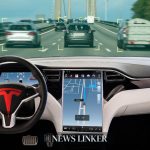Tesla, the pioneering electric vehicle manufacturer, recently celebrated a significant ten-year presence in the rapidly growing Chinese market. This milestone highlights the company’s enduring commitment and success in one of the world’s largest markets for electric vehicles (EVs). It also underscores the growing trend of EV adoption in China, where Tesla has played a crucial role. Over the decade, Tesla has expanded its footprint, delivering over 1.7 million vehicles to Chinese customers, reflecting both the brand’s popularity and the strategic importance of the Chinese market in Tesla’s global operations.
Decade of Growth and Influence
Ten years ago, Tesla made a bold entrance into the Chinese market by delivering the first batch of Model S sedans, a move that set the stage for a significant shift in the automotive industry in the region. Among the first owners were notable Chinese tech entrepreneurs, highlighting the status of Tesla’s vehicles as a symbol of innovation and prestige. This introduction not only marked the beginning of a new era for Tesla but also for the electric vehicle industry in China, which has seen robust growth and is now a leader in EV adoption globally.
Continued Expansion and Local Production
Tesla’s growth in China can be attributed to its strategic establishment of the Giga Shanghai factory, which serves as both a production site and an export hub. This facility, which is responsible for the production of the China-made Model 3 and Model Y, has significantly boosted Tesla’s manufacturing capabilities, allowing the company to achieve a record output and meet the growing demand for electric vehicles. Last year, vehicles produced at Giga Shanghai accounted for over half of Tesla’s total global deliveries, illustrating the factory’s pivotal role in Tesla’s global strategy.
Impact on the Auto Industry and Competitors
Tesla’s introduction of advanced EVs in China has not only captured a substantial market share but also spurred local automakers to accelerate their own EV developments. Companies like Xiaomi and Li Auto, whose founders were among the first to own Tesla cars in China, have been inspired to launch competitive models that challenge Tesla’s dominance. This competitive environment has fostered innovation and driven technological advancements in the electric vehicle sector across the region.
Key Insights from Tesla’s Journey
– Tesla’s strategic entry into the Chinese market catalyzed a broader acceptance and enthusiasm for electric vehicles.
– Local production via Giga Shanghai has been a cornerstone of Tesla’s ability to scale up and meet increasing consumer demand.
– Tesla’s influence has galvanized local competitors, enhancing the overall innovation and growth of China’s EV industry.
Reflecting on Tesla’s decade in China offers profound insights into the dynamic interplay between a visionary company and one of the world’s most lucrative markets. Tesla’s journey from introducing the first Model S to becoming a major player in China’s EV market illustrates the transformative power of combining innovative technology with strategic market insights. For other players in the industry and potential investors, Tesla’s strategies, including localizing production and understanding market needs, offer valuable lessons. As Tesla continues to expand its influence, the next decade will likely see even greater advancements and competition in this exciting industry.










